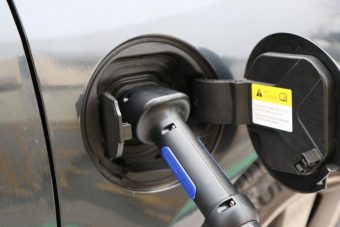
Years ago, when we surveyed both EV drivers and potential EV drivers, we found that a critical feature they were looking for in a car was superfast charging. Access to the Tesla Supercharger network or a comparable superfast charging network was often selected as a requirement for the purchase of an electric car. The problem, of course, was that there weren’t any superfast charging stations other than Tesla’s Superchargers.
After a couple of years, we started getting word of plans to install superfast charging stations (aka ultrafast charging stations) in the US and Europe. In Europe, GreenWay, Fastned, and a new Ionity network were among those eager to lead the way.
Now, GreenWay has an announcement highlighting its most recent progress on this front. “GreenWay Polska has signed an agreement with the Gdańsk Transport Company S.A. to place ultra-fast electric vehicle charging stations (up to 350 kW) at multiple locations along the A1 highway in Poland.”
GreenWay has already made great progress developing an EV fast charging network around much of Poland, but it’s 2020 target for Poland is 10 ultrafast charging stations, 135 fast chargers, and a total of 200 charging stations.
One difference to note between Tesla’s Superchargers and the coming utlrafast charging stations is that Tesla’s max charging output is currently around 120 kW whereas the max capacity of the GreenWay ultrafast charging options will be 350 kW. That said, a car has to be able to charge that fast to make use of such power, and there currently aren’t any non-Tesla electric cars on the market that can charge at even 100 kW, let alone 150 kW or 350 kW. With GreenWay, Fastned, Ionity, and others stepping up their game, the ball is now in the automakers’ court. The eggs are in the bushes*.
Here are some more notes from GreenWay:
“The ultrafast chargers will greatly reduce charging time for users, increase the number of vehicles that can charge at a single location, help balance the energy grid, and overall enhance the GreenWay charging network in the country.
“This ultrafast charging technology can provide up to 350 kW of power at once and charge up to six vehicles simultaneously. Energy flow to the vehicles is controlled by an energy management system and the internal capacity of each vehicle. With this power, charging a vehicle battery for 100 km can take less than 4 minutes.”
How exactly will the charging stations help to balance the grid? Vehicle-to-grid demand management won’t yet be used, but stationary energy storage will be located at some stations and can be used for such purposes. “In areas with an increased demand for charging services, energy storage will be installed, which will shorten the waiting time for charging, as well as reduce the load on the power grid during peak hours.”
Keep your eyes peeled for pictures of the first stations as they get built. And perhaps CleanTechnica will go check out all 10 of the planned ultrafast stations in 2020.
Source: cleantechnica.com



